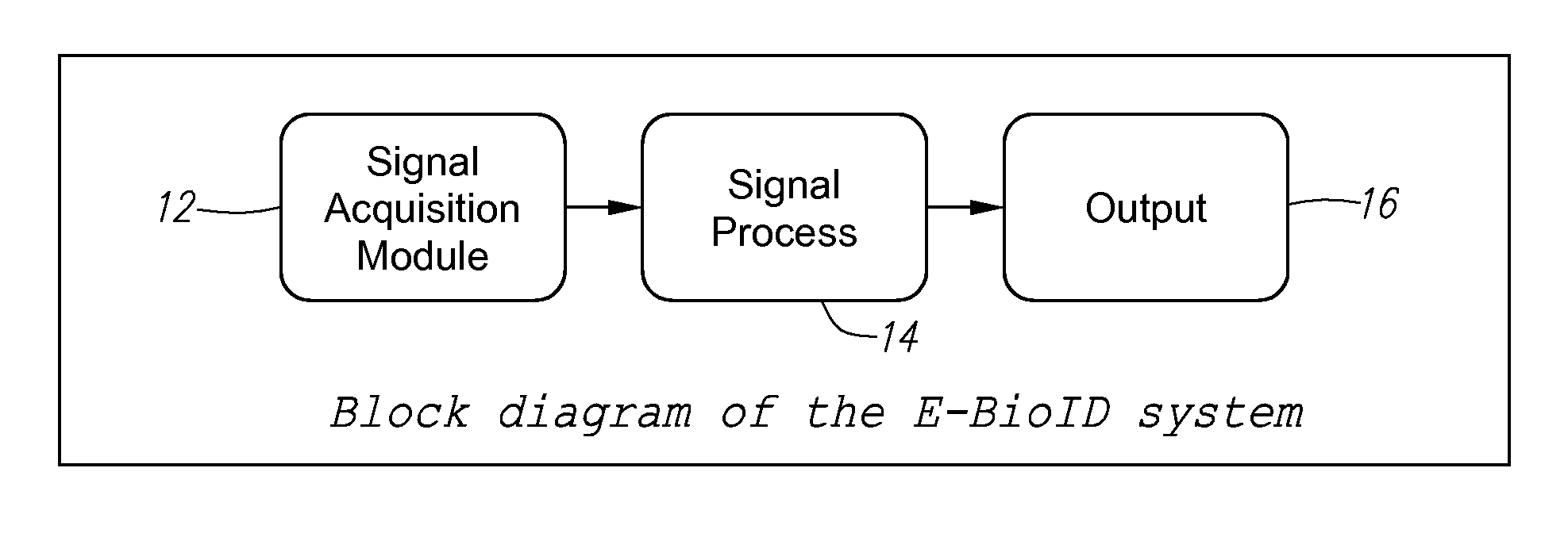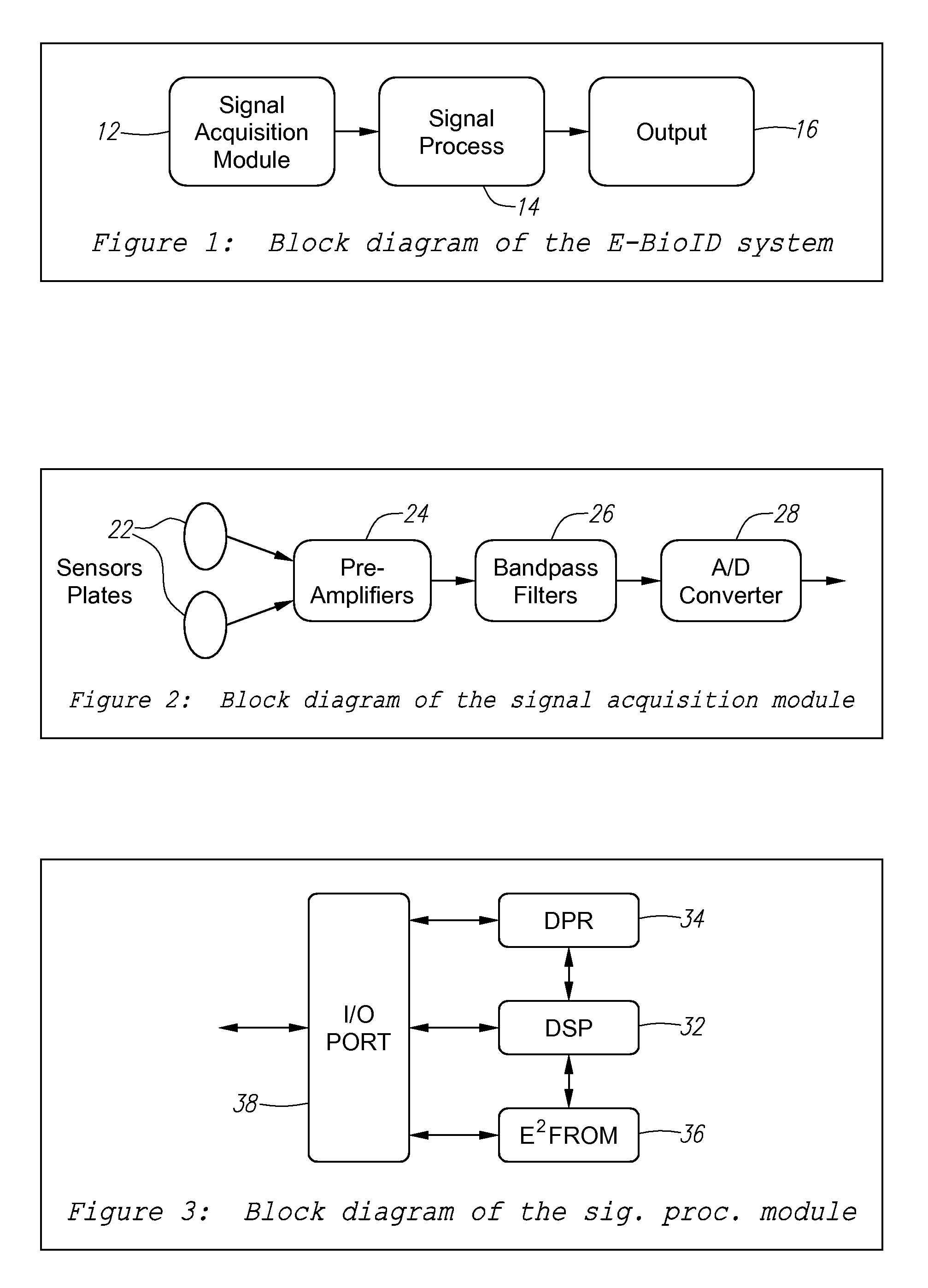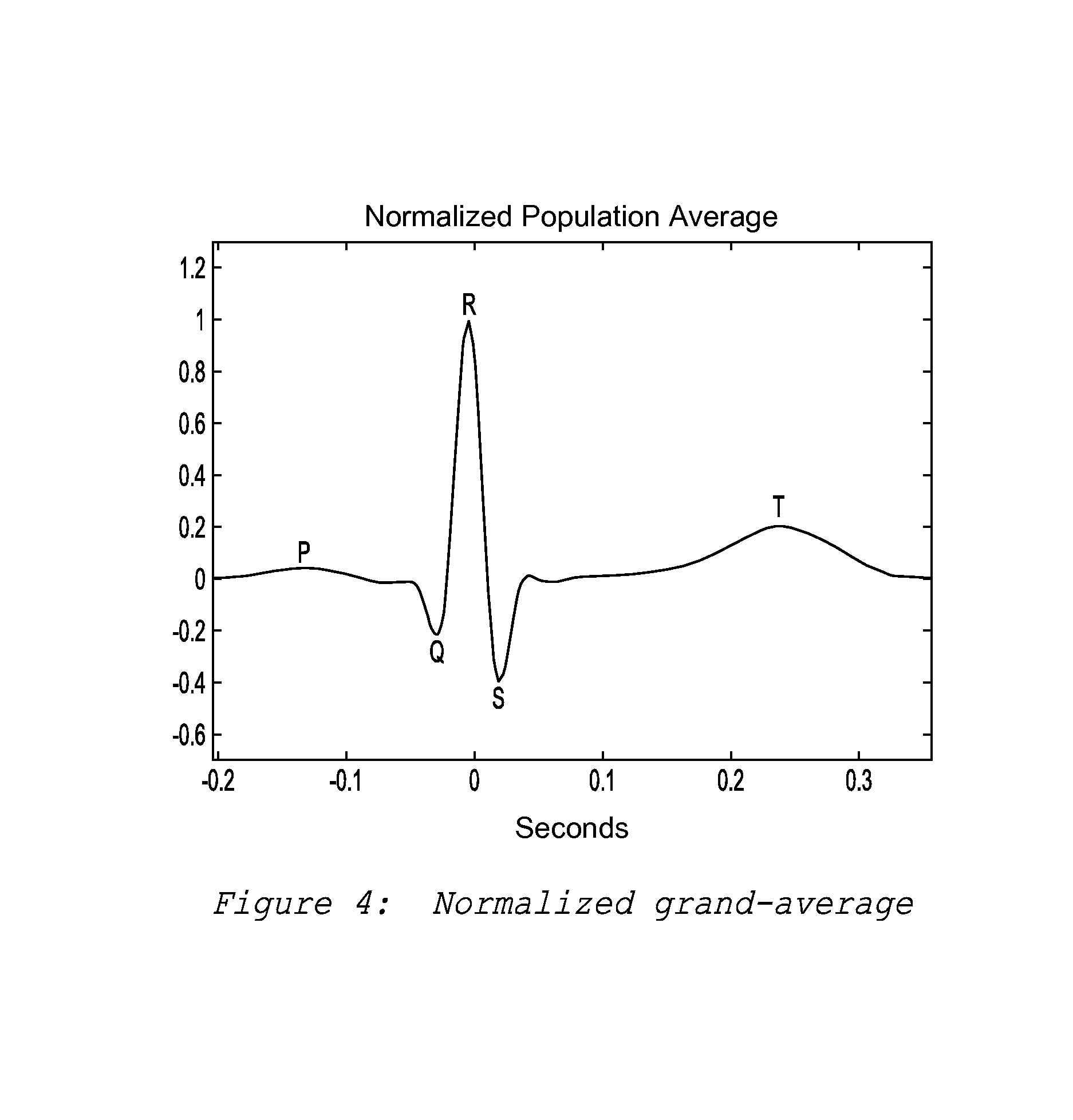Method and apparatus for electro-biometric identity recognition
a technology of electrobiometric identity and identification method, applied in the field of electrobiometric identification and verification system, can solve the problems of operator attendance, imposing a substantial burden on users, and limited market penetration of technology
- Summary
- Abstract
- Description
- Claims
- Application Information
AI Technical Summary
Benefits of technology
Problems solved by technology
Method used
Image
Examples
example
Recognition Algorithm
[0078]The following is an example an algorithm for the recognition phase:[0079]i. Let xj(n) represent a 10-second, 250 Hz digitized sample of the tested subject.[0080]ii. xj(n) is band-pass filtered in the range 4 Hz–40 Hz.[0081]iii. The filtered signal is denoted yj(n).[0082]iv. The filtered signal yj(n) is searched for the locations of QRS complexes, using the R peak as an anchor point.[0083]v. The filtered signal yj(n) is maintained or inverted to obtain positive ‘R’ peaks.[0084]vi. The identified QRS complexes are counted to establish an average pulse rate reading PRj.[0085]vii. The filtered signal yj(n) is segmented around the anchor points, taking 50 samples before and 90 samples after each anchor point.[0086]viii. The segments are aligned around the anchor points and averaged to produce the subject electro-cardiologic signal, denoted sj(n).[0087]ix. The subject electro-cardiologic signal sj(n) is normalized according to the average pulse rate PRj. The pul...
PUM
 Login to View More
Login to View More Abstract
Description
Claims
Application Information
 Login to View More
Login to View More - R&D
- Intellectual Property
- Life Sciences
- Materials
- Tech Scout
- Unparalleled Data Quality
- Higher Quality Content
- 60% Fewer Hallucinations
Browse by: Latest US Patents, China's latest patents, Technical Efficacy Thesaurus, Application Domain, Technology Topic, Popular Technical Reports.
© 2025 PatSnap. All rights reserved.Legal|Privacy policy|Modern Slavery Act Transparency Statement|Sitemap|About US| Contact US: help@patsnap.com



